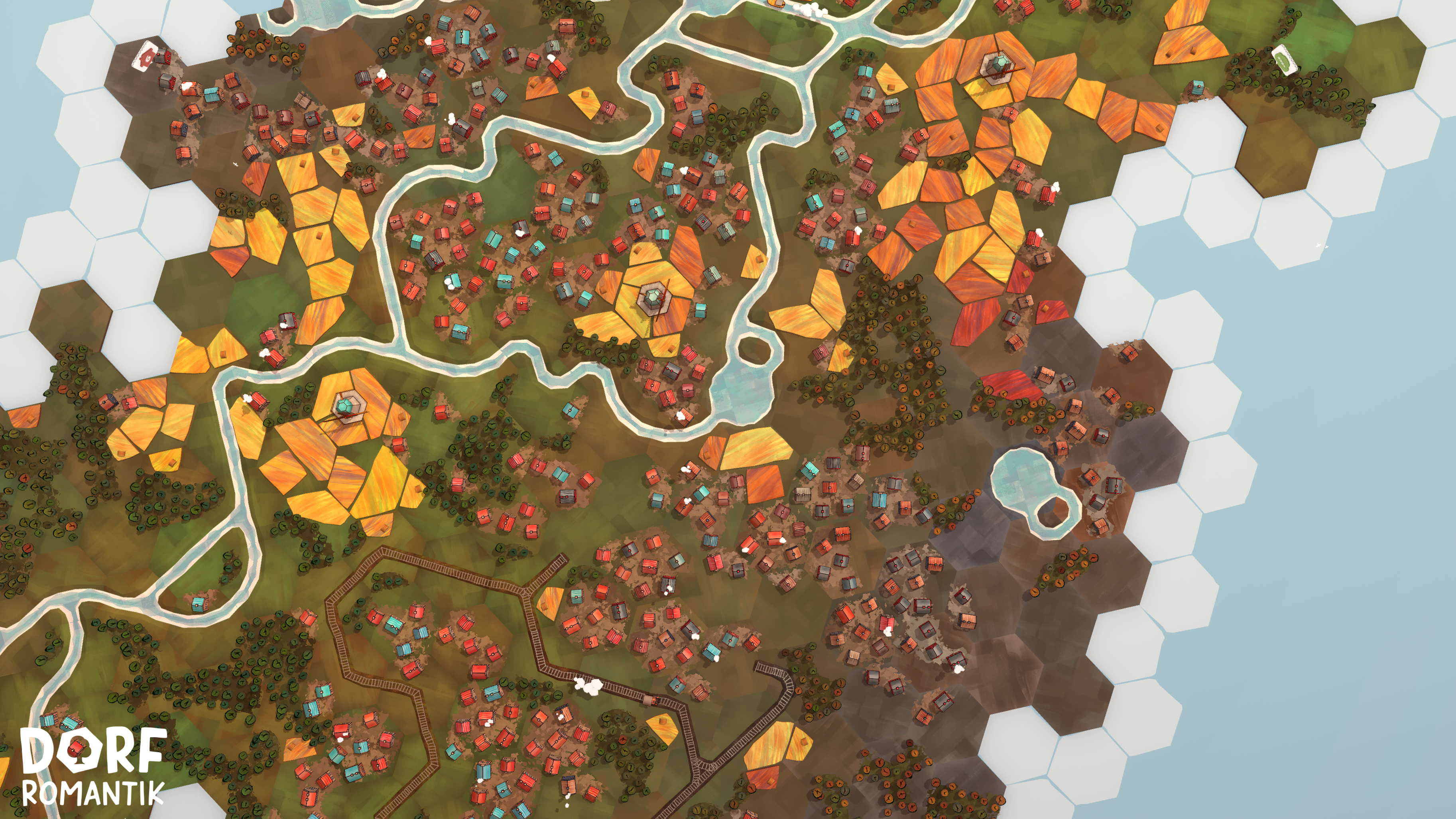Usually, puzzle games categorized as a separate genre from turn-based. However, there are two reasons to consider Dorfromantik both. The first one – gameplay here is fully turn-based. There is no reaction required or speed to fit into the time limit (like in Tetris or various match-threes).
And the second reason is that Dorfromantik’s gameplay is actually inspired by a table-top strategy called Carcassone. Or at least its basic rules.
One Tile at a Time
In case you haven’t heard about Carcassone (I have heard, but still had to look up the rules), the goal of the game is to create a landscape by putting together square tiles (or, in the case of Dorfromantik, hexagonal tiles) one-by-one on the table. And preferably lay them out so they wouldn’t be just random pieces – the road segments should be connected into long routes, castle walls close around the area, etc. The more “closed” objects you control, the bigger the score.
Unlike Carcassone, in Dorfromantik you don’t have an opponent. However, you have a finite amount of tiles in a stack. As soon as you run out of tiles the game ends, and the only way to add more is to complete “quests” by connecting your tiles into bigger towns, fields, forests, roads, canals, and… Actually, that’s all – there are only five types of terrain. This is probably for the better or you would have fewer chances to get the needed type from the stack.
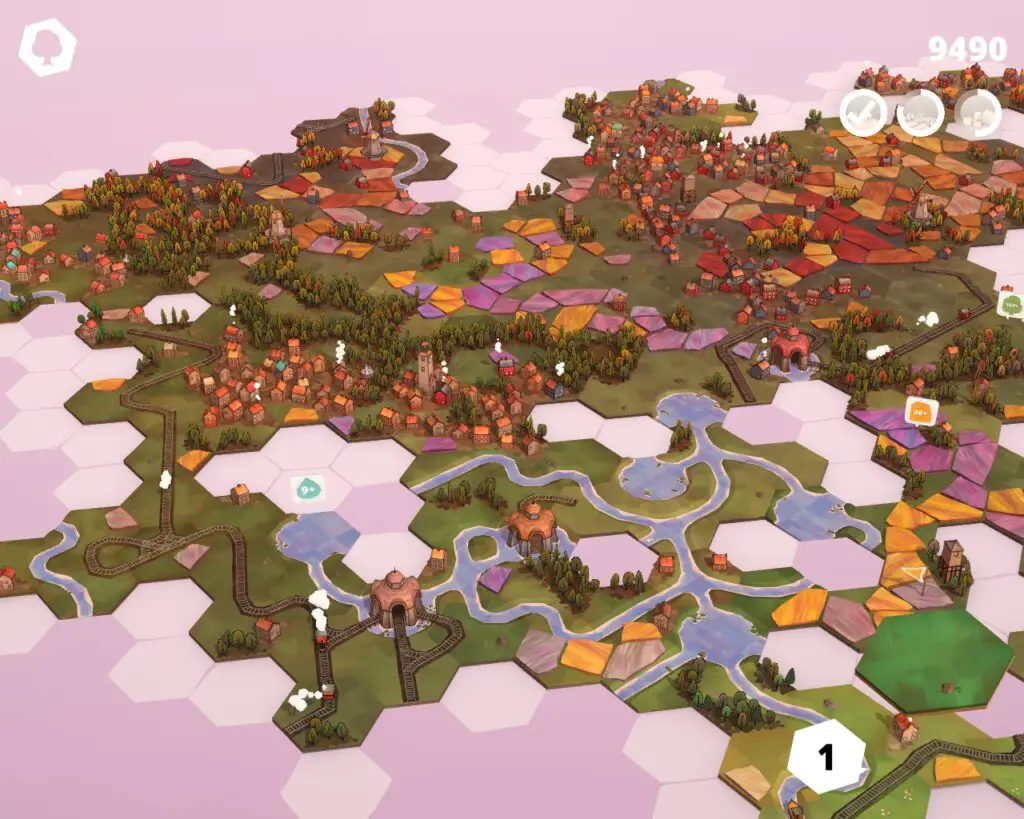
Tiles can also have different layout. There are even tiles that have a mixed terrain – a few houses with a few trees, railroad that goes between fields, or even a station that can connect both railroads and waterways.
Not all tiles are available from the first playthrough. Some of them you need to find around the playfield, connect your landscape to them and complete the associated quest. Only after that, you’ll get the reward.
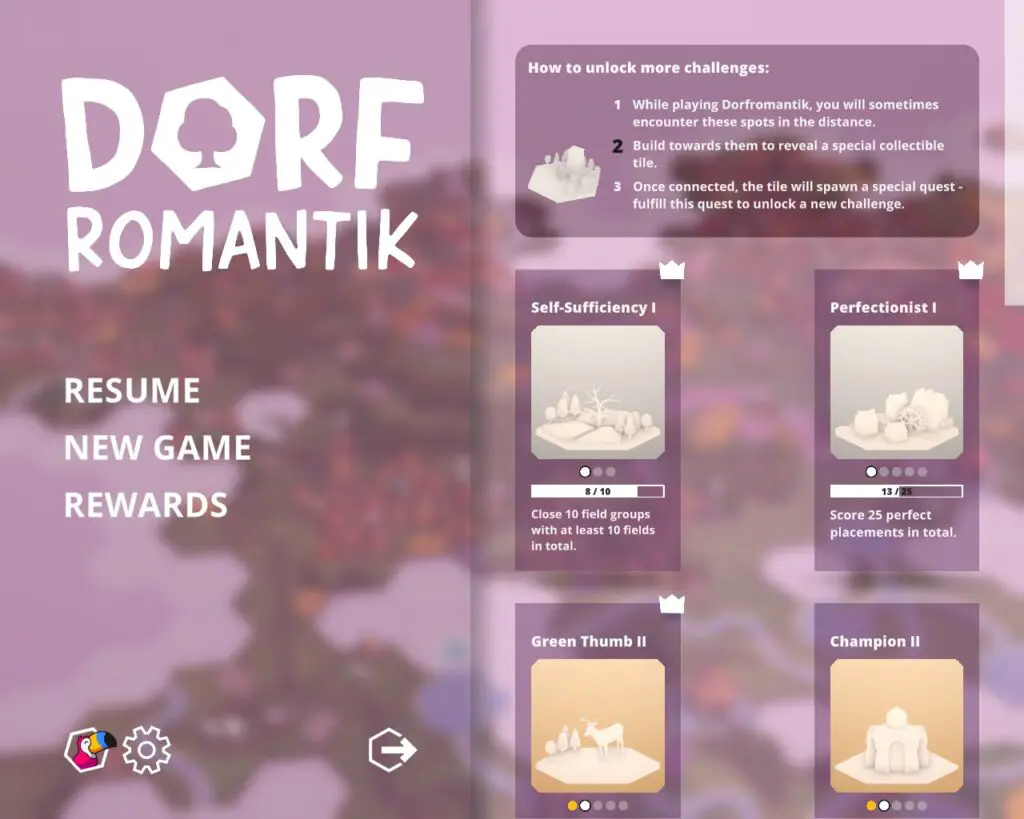
While most quests task you with connecting enough houses or trees (number will be specified on the tile), sometimes a task for “completion” pops up. You need to “close” a town or forest with tiles of different types so it wouldn’t be able to expand it further. And quests for special tiles can include challenges like connecting several tiles in a row perfectly or making specific number of large fields areas in one game.
Country Romantics
However, let’s face it. Completing quests, getting a high score, and achievements in Dorfromantik will always be overshadowed by the relaxing and meditative process of laying out tiles itself. Hovering over the map, watching the towns you’ve built, tiny boats roaming your canals and lakes, steam locomotives moving along the maze of railroads you’ve laid out, windmills rotating… That’s the main appeal that developers offer you.
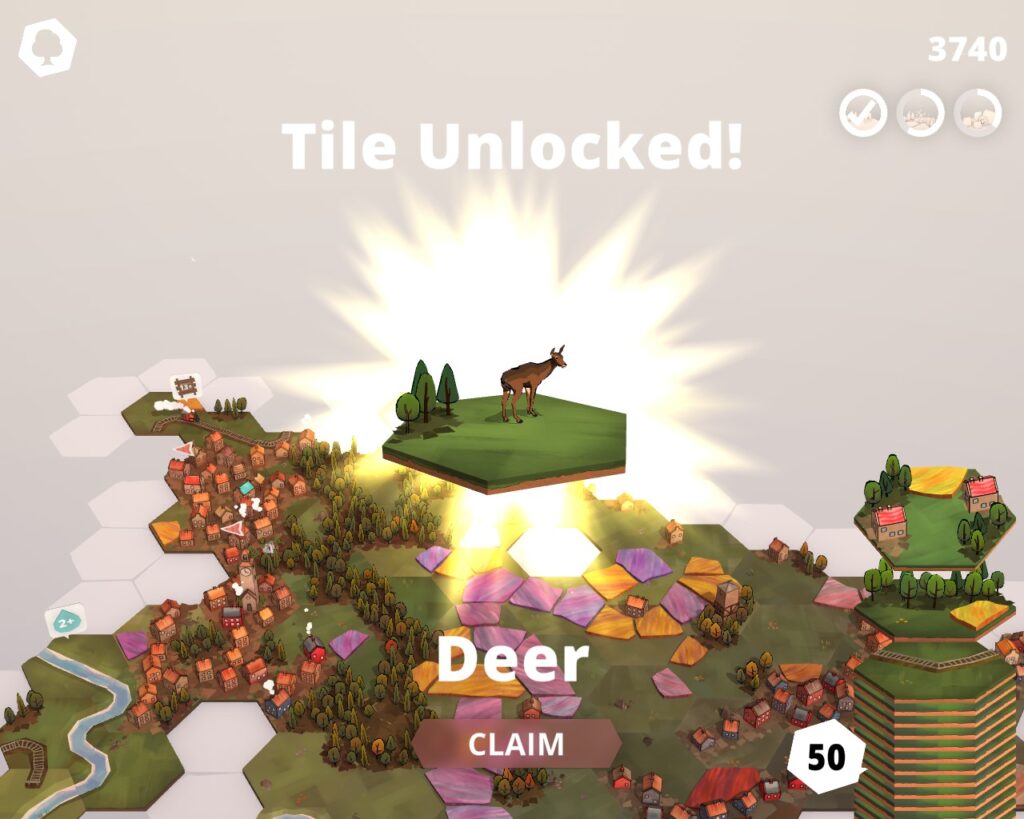
Music and visual style, which interestingly enough reminds me of “Hilda” animated show, greatly helps with getting that cozy feel of a calm indie game.
The additional goal of finding “special hexes” fits very well. Even most of the time your reward will be just a new variation of the same tile type or simple re-skin, additional “biomes” will make a picture of the bucolic landscape even more beautiful. New color schemes will be applied automatically to make your map seem more natural. Too bad that you can’t just scale the view enough to make your largest landscapes fit the camera view.
Accessed (Too) Early
Camera view and interface, in general, are probably the weakest points of the current Early Access version. When I was building my “country landscape” far too often I had problems because I missed some information. Sometimes a house on a town tile wasn’t actually connected to the side, that I thought it was. Other times I missed “overflow” for a “connect exactly n tiles” quest because its marker was too far away and not in the camera. Considering how scarce are quests in the later game are and how large amount of tiles they require, such mistakes always led to failure.
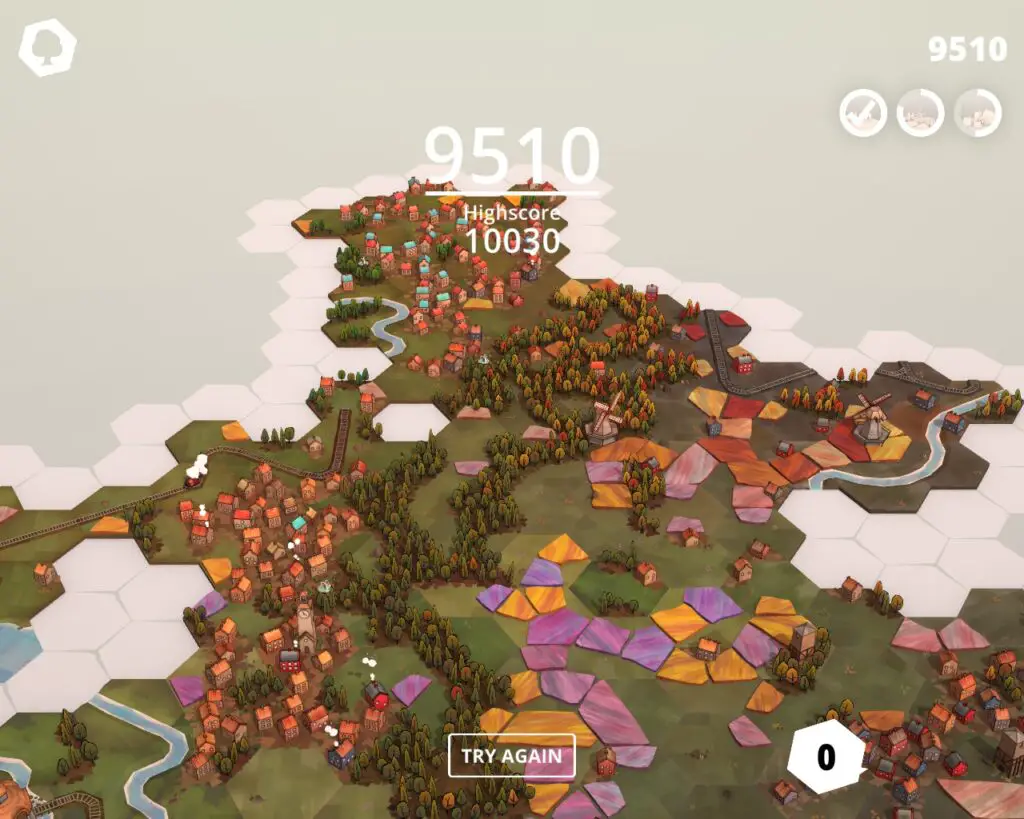
Actually, randomization itself feels too strong. You can go without receiving a quest for a dozen of turns and then get a task that requires a dozen more… with less than twenty tiles in the stack. How am I supposed to replenish my “hand”? Not to mention that tiles themselves can all be useless… I don’t know, maybe there is some adjustment and there is a system how quest on a “closure” is given. But I don’t see it, and thus every time I have a “bad streak” it invokes the feeling of frustration that doesn’t go well with supposed meditative relaxation.
I really hope that developers will address all the inconveniences. And, in fact, they’ve already promised to – in the game’s “road map” there are already marks about tool-tips and better interface (I personally would prefer some “schematic mode” that would remove all the graphics and leave only colored zones that you can see clearly and immediately understand what can connect and where). So I’m looking forward to the end of the year to have some relaxing landscape building time.

